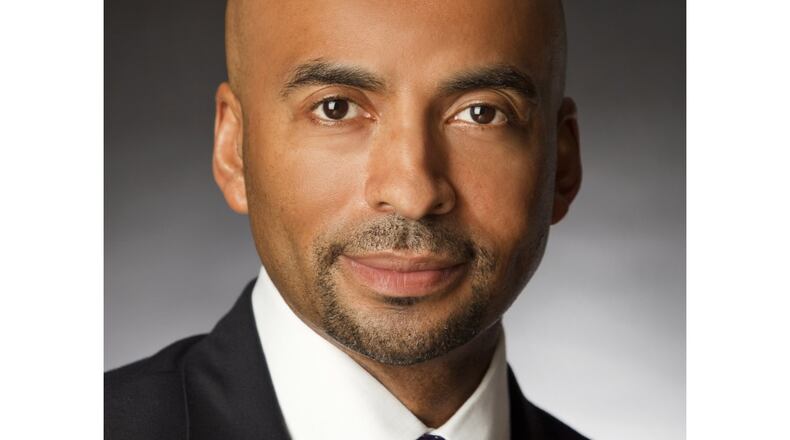INSPIRING PERSPECTIVES
Each Sunday, the AJC brings you insights from metro Atlanta’s leaders and entrepreneurs. Henry Unger’s “5 Questions for the Boss” reveals the lessons learned by CEOs of the area’s major companies and organizations. The column alternates with Matt Kempner’s “Secrets of Success,” which shares the vision and realities of entrepreneurs who started their dreams from scratch.
Find previous columns from Unger and Kempner at our premium website for subscribers at www.myajc.com/business.
MARTA is no longer a punching bag.
Part of the credit goes to Keith Parker, who took over as CEO of the much-maligned system in late 2012, shortly after a metro transportation funding referendum was soundly defeated.
Two years later, however, state legislators who’ve hammered MARTA in the past are talking about funding public transit. That’s partly because the system has significantly improved its service and finances, while traffic congestion gets worse.
What’s more, MARTA is launching service to Clayton County later this week. It’s the first county where residents voted to add MARTA since it began operating in DeKalb and Fulton in 1971.
While Parker has moved the agency forward, it has not been without controversy, including rough-and-tumble union negotiations and criticism over the outsourcing of jobs.
Still, the 48-year-old transit veteran has bolstered MARTA’s reputation at a critical time by drawing on a wealth of experiences.
Q: Who influenced you early in life?
A: I grew up in Petersburg, Virginia, a small city south of Richmond.
For as long as I can remember, my father was leaving or already gone to his first job when I woke up in the morning, and he was coming home from his second or third job in the middle of dinner or when we were getting ready to go to bed.
He had an incredible work ethic. He was in construction, a mechanic, always doing things with his hands. He was not educated.
My mother was a nurse’s aide.
I learned about the seriousness with which they took work. It was a big deal.
Q: What else did you learn from them?
A: My mother would constantly say that it didn't matter if the other neighborhood kids were doing wrong.
“I’m going to hold you accountable,” she said.
Q: Did she say anything about the racial tensions at that time?
A: My mom said you'll be watched with greater scrutiny.
She said you’ll be judged harsher than anyone else making a mistake, so you’ll have to work twice as hard to get half as far.
The final thing my mom and dad stressed was: “Don’t ever use race as an excuse. Whatever obstacles are thrown at you, knock them out of the way and keep going.”
Q: While in high school, you participated in Junior ROTC and became president of Gentlemen Athletes and Scholars. What did you learn?
A: I learned that if you can lead a group where you have no ability to punish or reward people, but you can still get them to do things, then you can do anything.
I tell that to young managers all the time. If you ever have to say to someone, “I’m your supervisor, so you must do what I just told you to do,” you’ve already lost. Your leadership is compromised.
It is much more important to be true to your word and for people to see the way you conduct yourself to deliver results. That’s the reason they’ll follow you.
Q: You went to Virginia Commonwealth University in Richmond, where you earned a bachelor’s degree in political science and a master’s degree in urban planning. What did you learn outside of academics?
A: I became a student activist. It's the toughest job I've ever hard, even to this day. Trying to get students to stay focused and organized to get things done is a heck of a chore.
At the time, which was 1985, there were protests against apartheid in South Africa. Also, I became president of the Black Caucus student group. We were able to get a minority affairs office on campus to get students acclimated and lower the failure rate.
As a student activist, you’re dealing with egos, expectations and working through your weaknesses as a leader. I learned the importance of giving credit to people and making them feel valued when you’re going through the journey with them.
Bonus questions
Q: You got your start in transit while you were a student intern. What happened?
A: I was a $4.90 an hour intern with the Greater Richmond Transit Co., doing coffee hustling, picking up dry cleaning and helping with donuts.
By chance, I was sitting in my little cubicle when the deputy CEO asked if I knew how to do computer mapping.
I didn’t, but I said I did.
He handed me the assignment for an important project. I went to the computer lab and talked to people who knew about mapping. I worked from that Thursday all through the weekend, and turned it in to him on Monday.
It’s something you could do today in 15 minutes, but it took hours and hours back then.
Q: What happened next?
A: I went to the assistant general manager and asked for other assignments, which I got.
Eventually, after getting my master’s degree in urban planning, I was hired as director of planning at age 25.
Q: What’s the takeaway?
A: You're never really ready. Every new job is a risk. There's always a huge learning curve.
If somebody else thinks you’re competent enough, you should think so, too. Jump in.
Q: You rose through the ranks in Richmond, from planning director to deputy CEO when you were 27. How did you advance from there?
A: I went back to school at night to get an MBA at the University of Richmond. I figured getting more education would help me become a CEO.
A few years later, I applied for my first CEO position and got it in Vancouver, Washington.
I had other offers, but I decided to go out west because I wanted to do the job that was the most challenging. It took me farthest from home, and the racial makeup of that area was only one-half of 1 percent African-American at that time.
Q: In Vancouver and then in Charlotte and San Antonio, you confronted many financial and service challenges while running the mass transit system. How did you approach the problems?
A: It was always about getting the most you could out of the money you had available.
Be a great listener and plan. By listening, you learn a whole lot more than by talking.
In Charlotte, for example, we had a lengthy campaign to try to find out from non-riders what it would take for them to ride the bus system.
Then we developed a plan. We changed the routes and redesigned all of the express buses with plusher seats, storage racks and individual reading lights and air control.
Q: What mistake did you make?
A: One time in Charlotte, I went to a historically African-American neighborhood to discuss a property acquisition.
I showed up at the meeting like I’m dressed now — in a corporate suit with a tie, very formal.
Within minutes, I could tell they didn’t trust me. The feedback after the meeting was that I was too stuffy.
Part of wearing the uniform is knowing what uniform to wear. Do some scouting beforehand.
Q: You did some scouting before you started to run MARTA in December 2012. How did that help you?
A: Before I officially arrived, I visited with different folks in roundtables that we convened.
I listened after I asked three questions: What do think of MARTA now? What would you like MARTA to be? What are you willing to do to help?
Based on the feedback, we developed a plan. One of the issues was people didn’t feel safe riding MARTA. That’s where the “Ride With Respect” campaign came from to reduce uncivil behavior.
Also, we needed to minimize stubbing our own toes. Something negative was written daily about MARTA.
We had to get our financial house in order. We were facing a $33 million budget deficit. I held off on projects and froze a couple of hundred vacant positions.
Q: You seemed to alienate the union during recent contract negotiations, to the point where it got personal. An ad was taken out contrasting your big house with much smaller rank-and-file homes.
A: It was a negotiating tactic. This was not a drag-out fight.
I don’t think you can recall one time when MARTA said a harsh thing about employees or their leadership.
Q: What did you do to improve the overall perception of MARTA?
A: Branding is critically important. We had to do a stronger job telling our story in the media and to public officials.
Also, increasing transit-oriented development helps. It goes beyond income. It could be a big mover of perception, helping the neighborhood get better and attracting jobs.
One other thing. In this industry, unfortunately, some really good leaders get beaten up. They don’t get the credit they deserve.
Then a guy like me comes in, and I’ve had the good fortune to follow some really good leaders, both in Charlotte and here in Atlanta.
The people who I replaced didn’t get the credit they deserved, and I think I get too much.
Q: What major mistake have you made at MARTA?
A: On a couple of occasions, I jumped too quickly to say let's move in a particular direction.
Then later, with more information coming in, it became clear that I should have heard the other side of the issue more. Ultimately, I was able to course correct.
The lesson is — who you hear first isn’t always right. Hear all sides of the argument.
Q: But you still move relatively quickly, don’t you?
A: Too many leaders and managers are too hesitant about jumping in after they get good ideas from inside the organization or outside. They wait and wait.
I say get going. If you keep waiting for perfect, you’ll never get there.
About the Author
Keep Reading
The Latest
Featured



